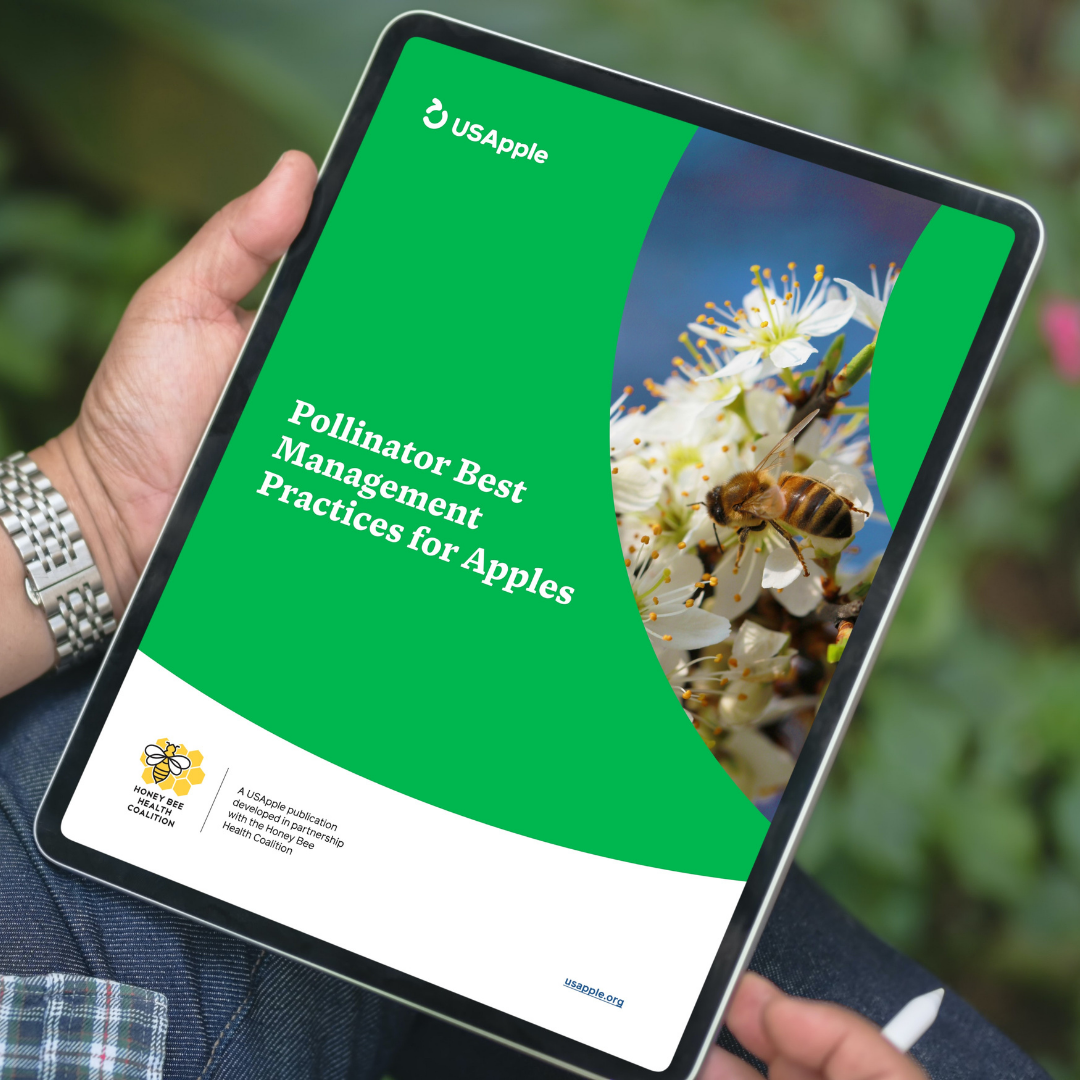Resources
Apple Best Management Practices
Apples are an important pollinator-dependent crop grown for commercial production on 295,000 acres in the United States. Pollinator Best Management Practices for Apples provides guidance for U.S. growers and regulators on pollinator protection in orchards.
The Honey Bee Health Coalition worked with the U.S. Apple Association to develop the Pollinator Best Management Practices for Apples guide. The document considers practical production needs and suggests elements of an outreach and education program to foster adoption and implementation of identified practices.
The document considers practical production needs and suggests elements of an outreach and education program to foster adoption and implementation of identified practices. The goal of this work is to increase understanding within the U.S. apple growing community of the benefits and opportunities around protecting pollinators while also recognizing the need to protect the crop from pest damage.

Protecting pollinators and honey bees in apple growing areas includes the following practices:
- Communicate: Open lines of communication between growers and beekeepers can help both parties understand each other’s concerns and help ensure healthy pollinator populations remain viable. Many states have implemented Managed Pollinator Protection Plans (MP3s) or similar programs to facilitate this communication. Other resources include state-based registries for apiary location which show pesticide applicators where honey bees are located. Farmers and applicators can contact their state or local department of agriculture, state apiarist, or similar organization to find out the best methods for contacting nearby beekeepers, but beekeepers also should take measures to make sure nearby farmers are aware of their operations.
- Think before you spray: Use integrated pest management (IPM) approaches that reduce unneeded or poorly-timed pesticide applications. Be aware that pesticides, especially several commonly used insecticides, can kill bees and other pollinators.
- Always follow the label and check for updates: When applying pesticides, always follow label instructions. Doing otherwise is a violation of the law.
- Provide food and water: Improve food and water resources for bees by providing habitat that includes flowering plants (e.g., in field margins, riparian buffers, terraces, etc.), avoiding pesticide exposure to non-target plants and water sources that bees use for food and hydration, and by cleaning up pesticide spills.
- Check for updates: Use extension agents, technology providers, and crop/beekeeping advisers to keep up to date on developing research, best management practices, and label language. All of which are evolving.
Please note: The label is the law, and it is a violation to apply pesticides contrary to label instructions and warnings. Voluntary adoption of best management practices can help further mitigate harmful effects on managed honey bees.